互文性与翻译ppt课件
- 格式:ppt
- 大小:1.02 MB
- 文档页数:12

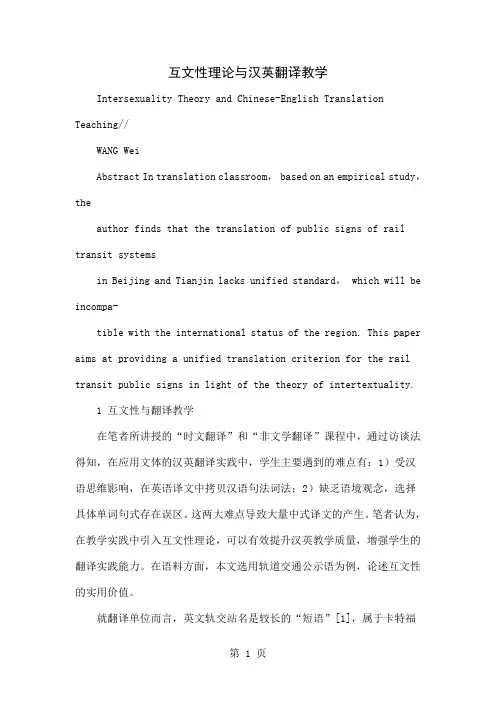
互文性理论与汉英翻译教学Intersexuality Theory and Chinese-English Translation Teaching//WANG WeiAbstract In translation classroom, based on an empirical study,theauthor finds that the translation of public signs of rail transit systemsin Beijing and Tianjin lacks unified standard, which will be incompa-tible with the international status of the region. This paper aims at providing a unified translation criterion for the rail transit public signs in light of the theory of intertextuality.1 互文性与翻译教学在笔者所讲授的“时文翻译”和“非文学翻译”课程中,通过访谈法得知,在应用文体的汉英翻译实践中,学生主要遇到的难点有:1)受汉语思维影响,在英语译文中拷贝汉语句法词法;2)缺乏语境观念,选择具体单词句式存在误区。
这两大难点导致大量中式译文的产生。
笔者认为,在教学实践中引入互文性理论,可以有效提升汉英教学质量,增强学生的翻译实践能力。
在语料方面,本文选用轨道交通公示语为例,论述互文性的实用价值。
就翻译单位而言,英文轨交站名是较长的“短语”[1],属于卡特福德(Catford)分类的第四层级,也就是纽马克(Newmark)认定的翻译“操作单位”[2]。
依照潘文国的分类,汉语轨交站名是一种较长的“辞”[3],即词和短语。
由此可见,英汉站名处于相同语言层级。
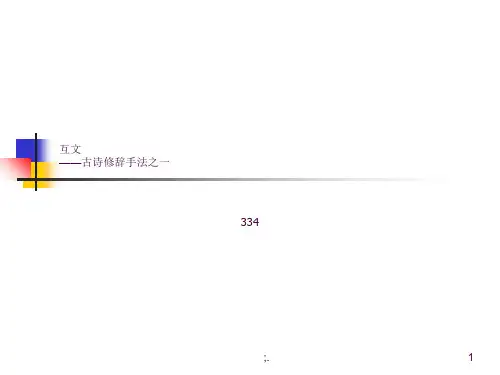
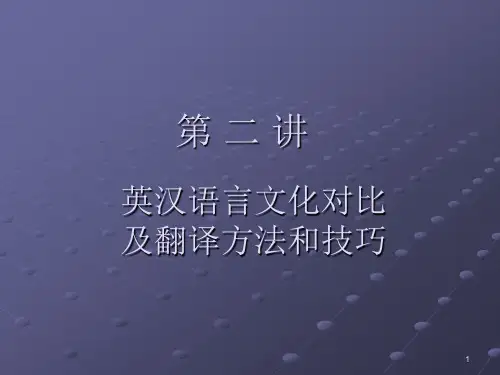
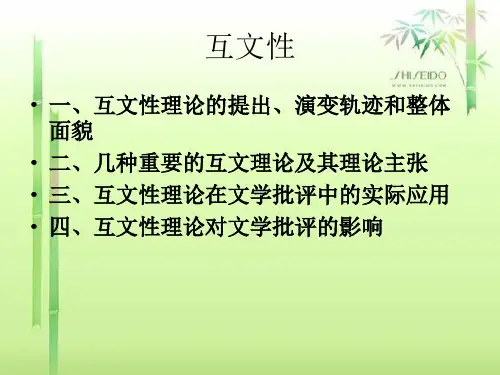
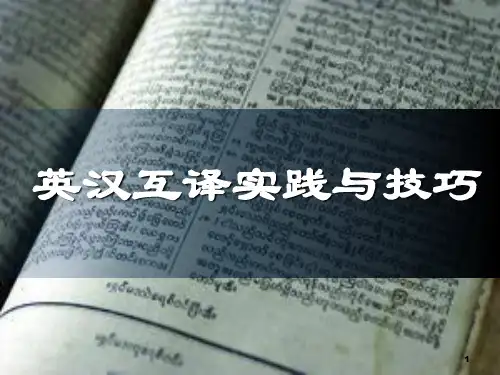


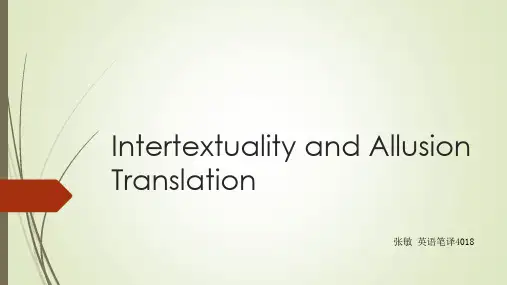

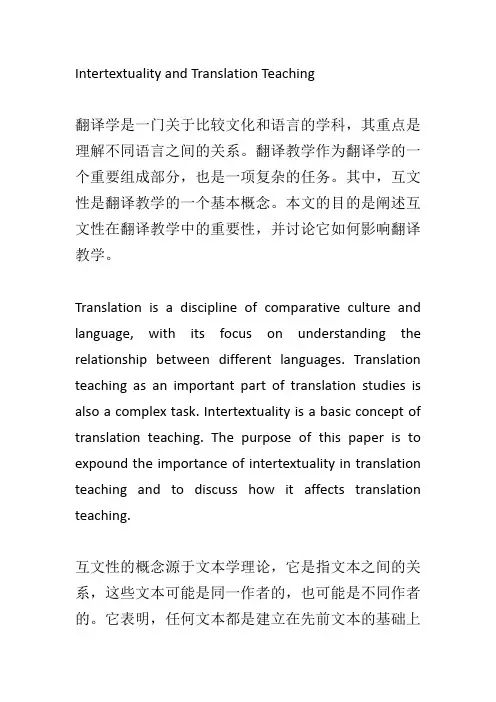
Intertextuality and Translation Teaching翻译学是一门关于比较文化和语言的学科,其重点是理解不同语言之间的关系。
翻译教学作为翻译学的一个重要组成部分,也是一项复杂的任务。
其中,互文性是翻译教学的一个基本概念。
本文的目的是阐述互文性在翻译教学中的重要性,并讨论它如何影响翻译教学。
Translation is a discipline of comparative culture and language, with its focus on understanding the relationship between different languages. Translation teaching as an important part of translation studies is also a complex task. Intertextuality is a basic concept of translation teaching. The purpose of this paper is to expound the importance of intertextuality in translation teaching and to discuss how it affects translation teaching.互文性的概念源于文本学理论,它是指文本之间的关系,这些文本可能是同一作者的,也可能是不同作者的。
它表明,任何文本都是建立在先前文本的基础上的,并以一种或多种方式参考先前文本。
翻译教学中的互文性意味着,源文本和译文之间有联系,并可以用于理解和翻译源文本。
The concept of intertextuality is derived from textual theory, referring to the relationship between texts, which may be from the same author or from different authors. It shows that any text is based on previous texts and referenced to previous texts in one or more ways. The intertextuality in translation teaching implies the connection between source texts and translation, and can be used to understand and translate source texts.翻译教学中的互文性可以帮助学生理解源文本,并且在翻译的过程中将其与译文进行比较,以便更好地理解语言。